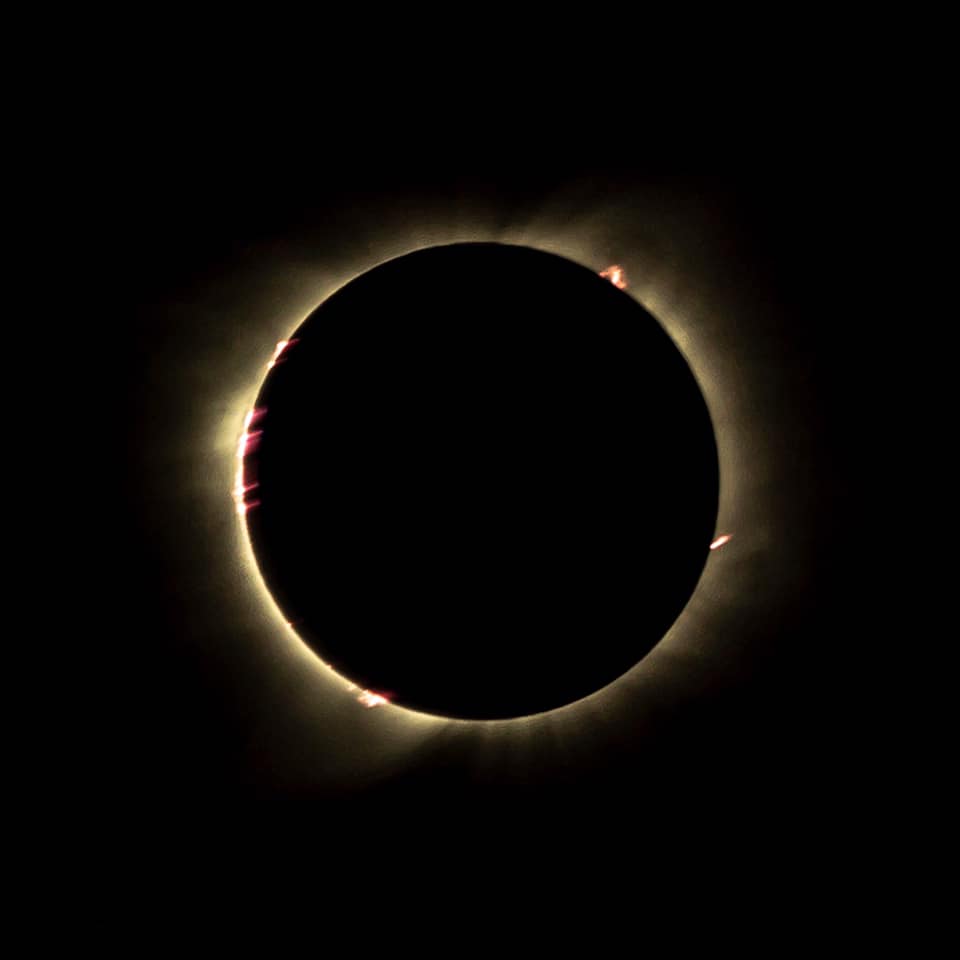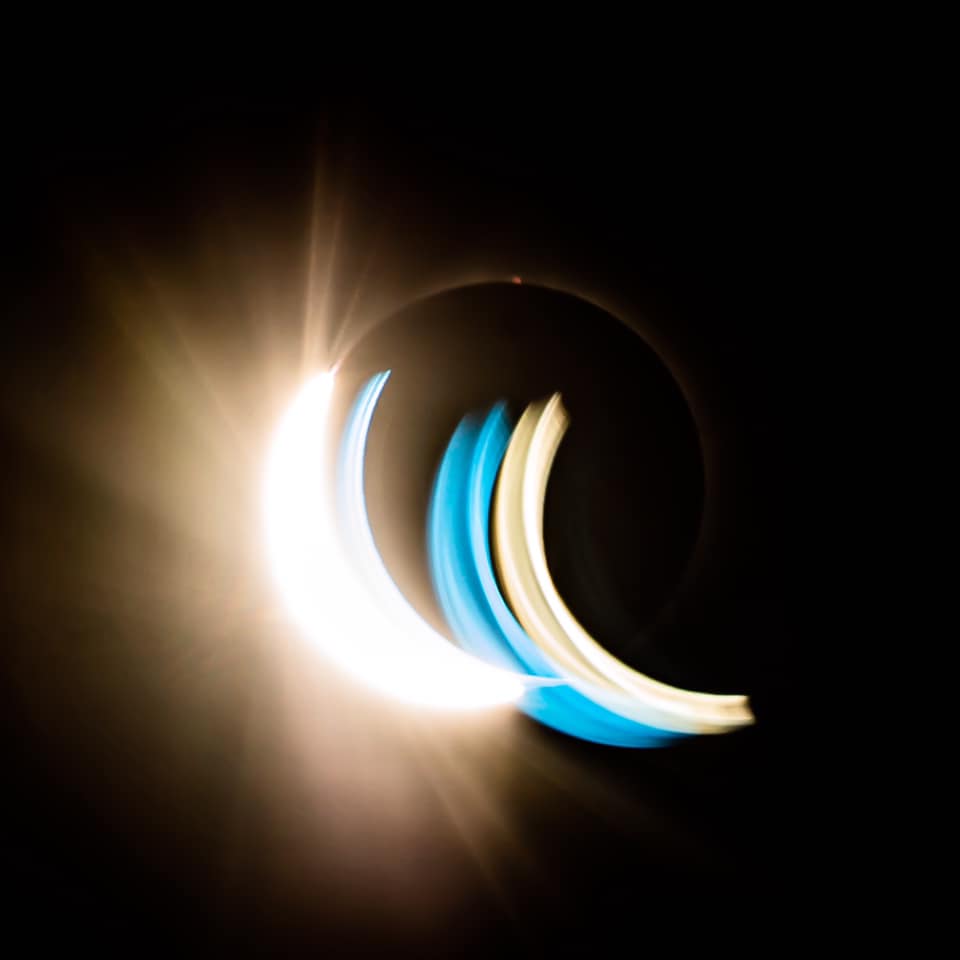
Total Solar Eclipse Images Captured By RAF Crew

A Royal Air Force A400M from British Forces South Atlantic Islands (BFSAI) has witnessed an incredibly rare total solar eclipse that took place within the Southern Hemisphere on Monday.
The aircraft took the opportunity to fly into the eclipse's path of totality during a routine maritime reconnaissance to the north of the Falklands Outer Conservation Zone l.
With time to capture the image incredibly limited, the crew spent about 90 seconds in the umbra region, flying along the path of the eclipse.
A total solar eclipse happens when the moon's apparent diameter is larger than the sun's, blocking all direct sunlight, turning daylight into darkness.
Squadron Leader Ian Price, OC1312 Flight, said: "With the last solar eclipse in the vicinity of the UK being in 1999, this is possibly a once-in-a-generation opportunity for an RAF aircraft to fly within an eclipse."
With the moon covering approximately 60% of the sun over the Falkland Islands, BFSAI personnel were hoping for a clear day to sight the ‘celestial dance’.
Unfortunately, due to cloud coverage, the eclipse was not visible from the islands.
The data captured will be sent to the Defence Science and Technology Laboratory (DSTL) in the UK, where further analysis will take place in support of an ongoing project supported by the US Air Force Office of Scientific Research.

"The fact that we can contribute to the British scientific community with the images captured shows the versatility of BFSAI assets, as well as the range of the A400M capabilities," Sqn Ldr Ian Price, OC1312 Flight added.
The project will compare real-life observations of solar eclipses to predictive models, with the aim of reinforcing known science about the powerhouse which drives our solar system.
Experts say the solar eclipse was partly visible in several Latin American countries as well as parts of Africa and areas of the Pacific and Atlantic oceans.
Another total solar eclipse is expected to be visible in Antarctica by the end of 2021.
Cover image: The corona – the outer atmosphere of the sun, not usually observable (Picture: RAF).









